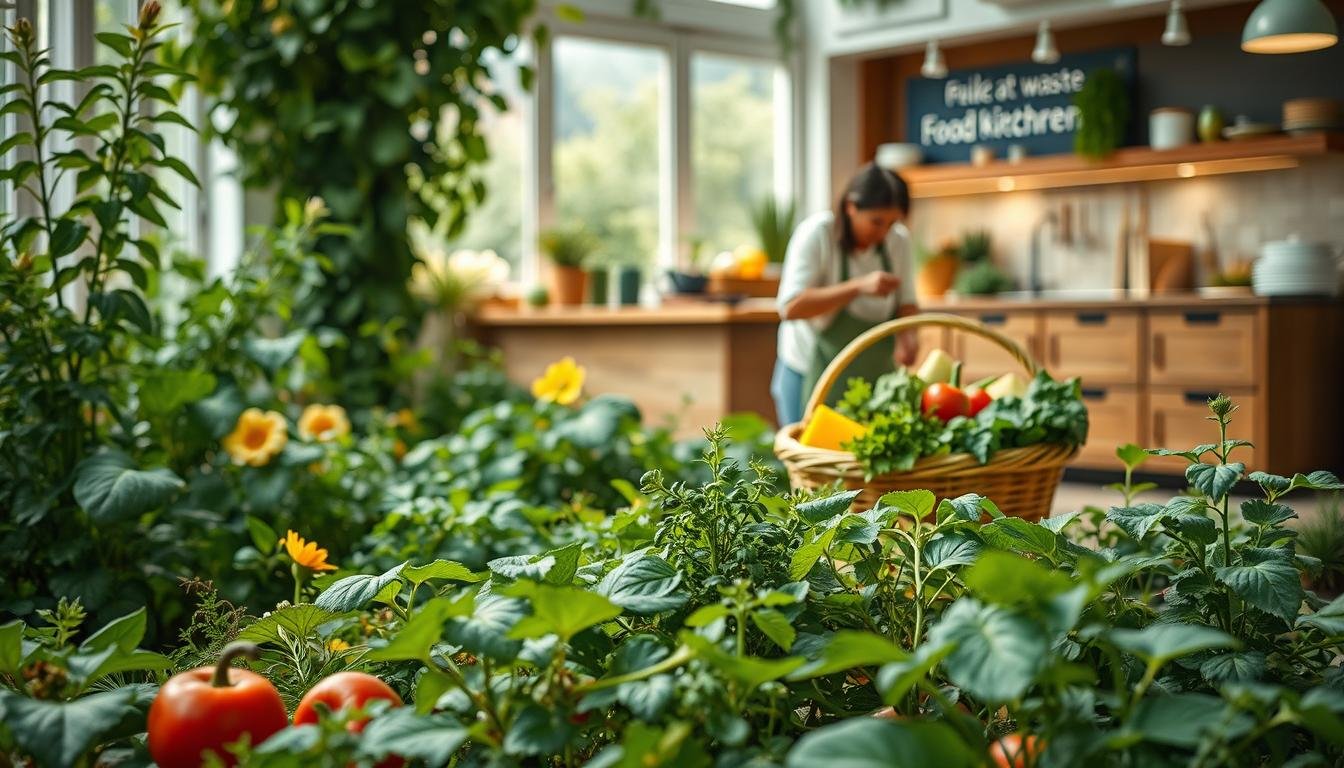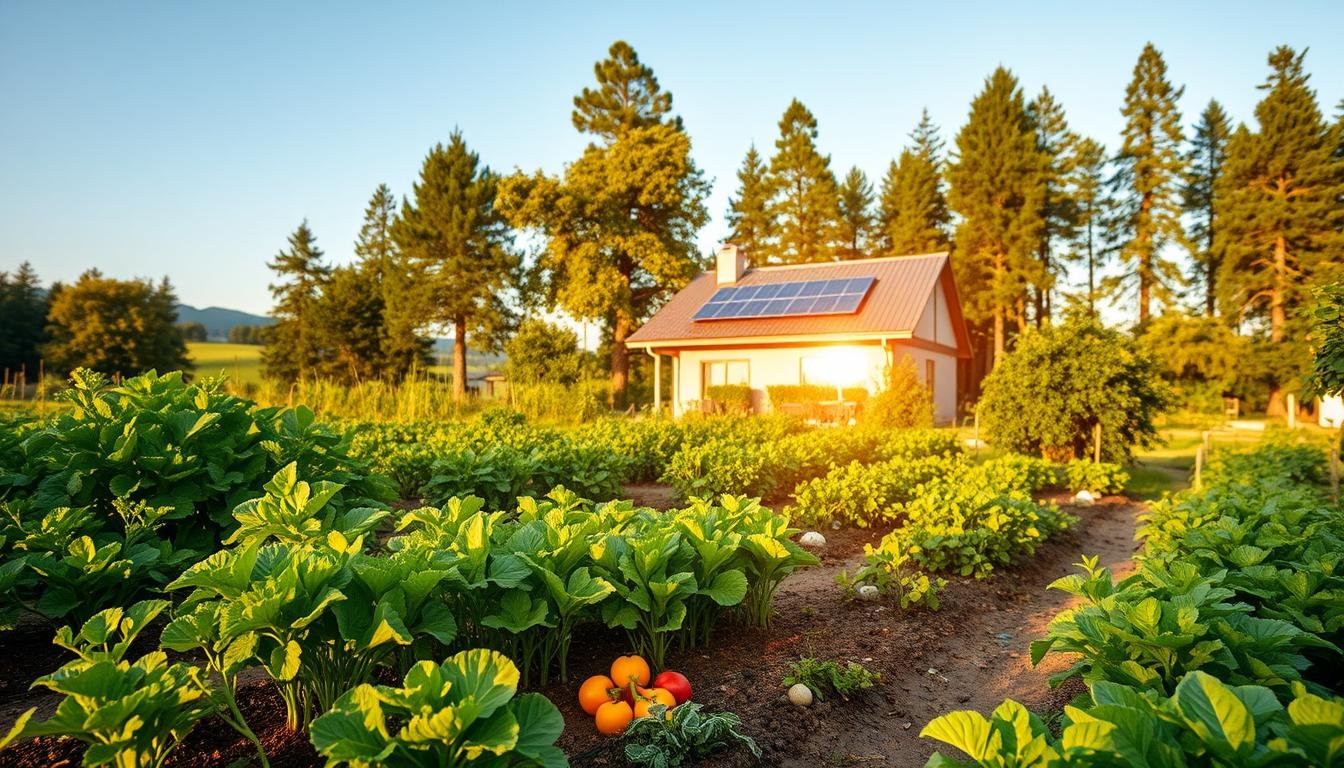Did you know that 1.3 billion tons of food is thrown away every year? That’s enough to feed everyone on Earth twice. This waste not only fills empty plates but also harms the environment.
Food waste wastes precious resources. Agriculture uses 25% of the world’s freshwater but much of it is wasted. This waste contributes to climate change, causing 8-10% of global emissions.
Small changes can make a big difference. Simple actions like meal planning and composting can greatly reduce waste. When we all work together, we can protect the planet, save money, and help those in need.
Key Takeaways
- Global food waste hits 1.3 billion tons annually, worsening hunger and emissions.
- Methane from landfills is 25x more potent than CO₂, accelerating climate change.
- Wasted food squanders 25% of freshwater used in farming.
- Households can reduce waste by storing food properly and composting scraps.
- Businesses benefit from tracking waste and donating surplus to food banks.
The Environmental Toll of Food Waste
Food waste in landfills is a major climate issue. In the U.S., 21% of municipal waste is food, according to the EPA. This waste harms resources, causes toxic emissions, and strains ecosystems.
Methane Emissions and Climate Change
When food rots without oxygen, it releases methane. This gas traps heat 80 times faster than CO₂ over two decades. Landfills, full of organic waste, become methane factories.
U.S. food waste generates 170 million metric tons of CO₂ equivalents each year. That’s like 42 coal plants running nonstop. If food waste were a country, it would be the third-largest emitter globally.
Resource Depletion: Water, Land, and Energy
Growing uneaten food uses 21% of freshwater. That’s as much as the Volga River flows in a year. Farms waste 28 million acres on food that’s thrown away. That’s bigger than Pennsylvania.
The energy loss is huge. 2.5% of total U.S. energy goes to food that’s never eaten. The supply chain wastes fuel, labor, and fertilizer.
Using circular systems, like composting or animal feed, can recover these resources. Every apple core repurposed cuts emissions and saves land.
How to Manage Food Waste for a Greener Future at Home
Your kitchen can help reduce emissions. Start with simple habits. 30% of household trash could be composted or reused, saving money and reducing landfill loads.
Meal Planning and Smart Shopping
Plan meals around what you already have. The USDA’s FoodKeeper app helps track expiration dates, reducing spoilage by 30%. Buy frozen or canned goods as backups.
Stick to a shopping list. Bulk buys save time but can lead to waste if items expire. Use hand measurements (e.g., a fist = 1 cup) to avoid overcooking.
Proper Food Storage Techniques
Keep fruits and vegetables fresh with simple tricks. Store herb stems in water, and keep apples away from leafy greens. Root veggies last months in sand or sawdust.
Follow the FIFO method: label jars with dates and place newer items behind older ones. This cuts spoilage by nearly a third.
Creative Uses for Leftovers and Scraps
Turn stale bread into croutons or breadcrumbs. Citrus peels make zesty cleaners or flavor boosts for soups. Ferment vegetable scraps into tangy kimchi.
Donate surplus via AmpleHarvest.org. Their locator connects you with nearby food banks accepting fresh goods.
Composting: Turning Waste into Nutrient-Rich Soil
Outdoor bins, Bokashi buckets, or worm farms transform scraps into garden gold. Fall is ideal to start—mix pumpkin guts with brown leaves for balance.
Composting diverts 30% of trash from landfills. Avoid methane by turning piles weekly and keeping them moist.
Business Innovations to Curb Food Waste
Companies are rewriting sustainability playbooks with bold strategies to tackle excess inventory. Forward-thinking enterprises blend profit with purpose, turning waste into wins for the economy and environment.
Donating Surplus to Food Banks
Food donation programs bridge gaps between abundance and need. Starbucks’ FoodShare initiative redistributes unsold meals to shelters, while Feeding America’s MealConnect app links retailers with local pantries.
Tax incentives boost participation. U.S. businesses earn a 25% deduction for donated goods. Happen Ventures leverages this, diverting 4 tons daily from landfills to community centers.
Embracing Imperfect Produce
“Ugly” fruits and vegetables account for 20% of farm yields. Brands like Imperfect Foods sell these items at discounts, saving 115 million pounds. Their model educates consumers about beauty in flaws.
Retailers also mark down near-expiry goods. Dynamic pricing apps like Wasteless adjust costs in real time, cutting waste by 30% in pilot stores.
Upcycling and Circular Systems
Byproducts find new life through innovation. ReGrained transforms spent brewery grain into snacks, and CoffeeFlour repurposes cherry pulp. These practices close loops in production cycles.
Hotels and grocers join the movement. Trayless buffets shrink plate waste by 50%, while markdown zones spotlight soon-to-expire items.
Community Action and the Circular Economy
Local communities are driving powerful solutions to reshape the economy and protect the environment. Grassroots efforts cut waste while strengthening neighborhoods. Over 200 U.S. cities now mandate composting, proving collective action works.
Urban areas innovate with shared resources. Tool libraries lend canning equipment, while community fridges in NYC and LA offer free surplus meals. Schools teach composting through garden programs, embedding sustainable habits early.
Technology bridges gaps. Apps like ShareWaste connect composters with neighbors, and Lomi home systems turn scraps into soil overnight. Gleaning networks, such as the Society of St. Andrew, rescue farm surplus for those in need.
Policy changes amplify impact. San Francisco’s composting ordinance diverts 80% of trash from landfills. Advocates push for standardized date labels to curb confusion—a simple fix with nationwide impact.
These practices show how local action fuels global change. Every repurposed scrap strengthens the circular economy, proving that communities hold the key to a balanced world.
Conclusion
Every small effort counts in the fight against excess. With 1.3 billion tons wasted yearly, the stakes are high. Yet, progress shines: U.S. waste dropped 2% from 2010, and tech like AI fridges promises sharper cuts.
The benefits ripple far. Meeting the 2030 reduction goal could slash emissions and save resources. Tools like SaveTheFood.com or the TooGoodToGo app make action easy. Start by repurposing leftovers or composting this week.
As the UNEP notes, this challenge is solvable. From edible coatings to community fridges, innovation thrives. Your choices shape the planet’s future—turning meals into momentum for sustainability.
Remember: Your fork is a climate tool. Together, we can nourish both people and the climate, one plate at a time.
FAQ
Why is food waste harmful to the environment?
When food ends up in landfills, it decomposes and releases methane. This gas accelerates climate change. Wasted food also means wasted resources like water, energy, and land used in production.
What are simple ways to reduce food waste at home?
Plan meals ahead, shop smart, store fruits and vegetables properly, and repurpose leftovers. Composting scraps also helps divert waste from landfills while enriching soil.
How does composting benefit the planet?
Composting turns organic waste into nutrient-rich soil, reducing methane emissions from landfills. It supports sustainable gardening and cuts the need for chemical fertilizers.
Can businesses help minimize food waste?
Yes! Companies can donate surplus goods to food banks, sell imperfect produce, and optimize supply chains to prevent excess waste. Many brands like Kroger and Walmart have active programs.
What role do consumers play in a circular economy?
Individuals can support local food recovery initiatives, buy from sustainable brands, and advocate for policies that reduce waste. Small actions collectively drive big change.




